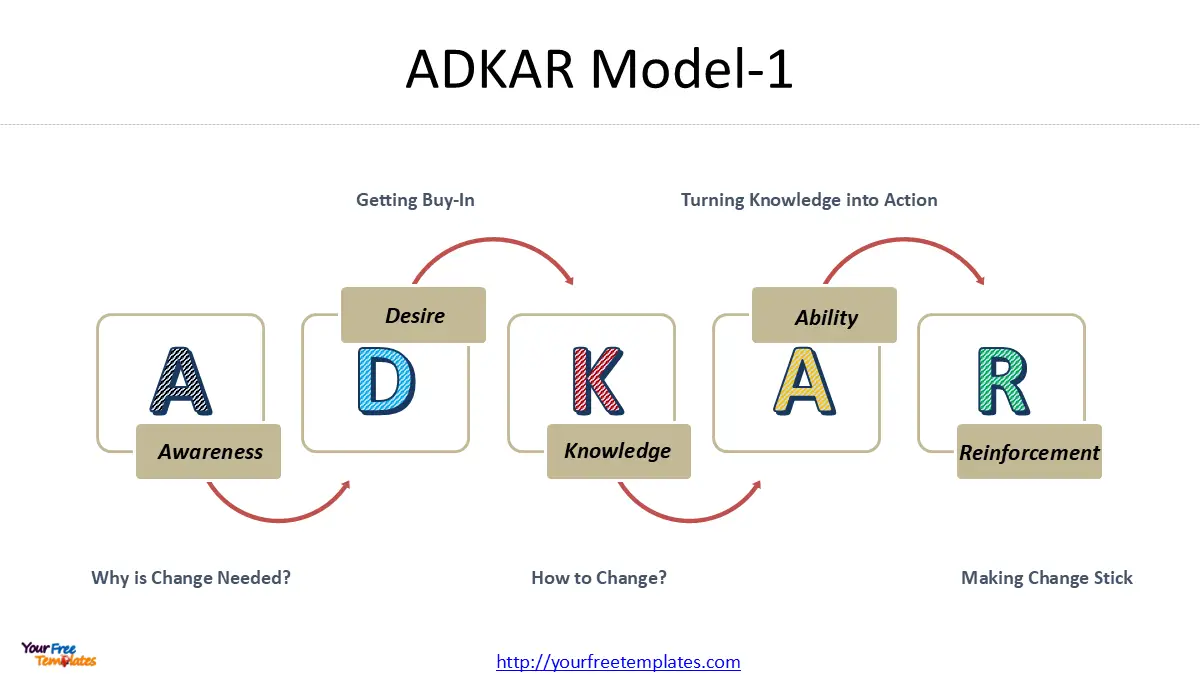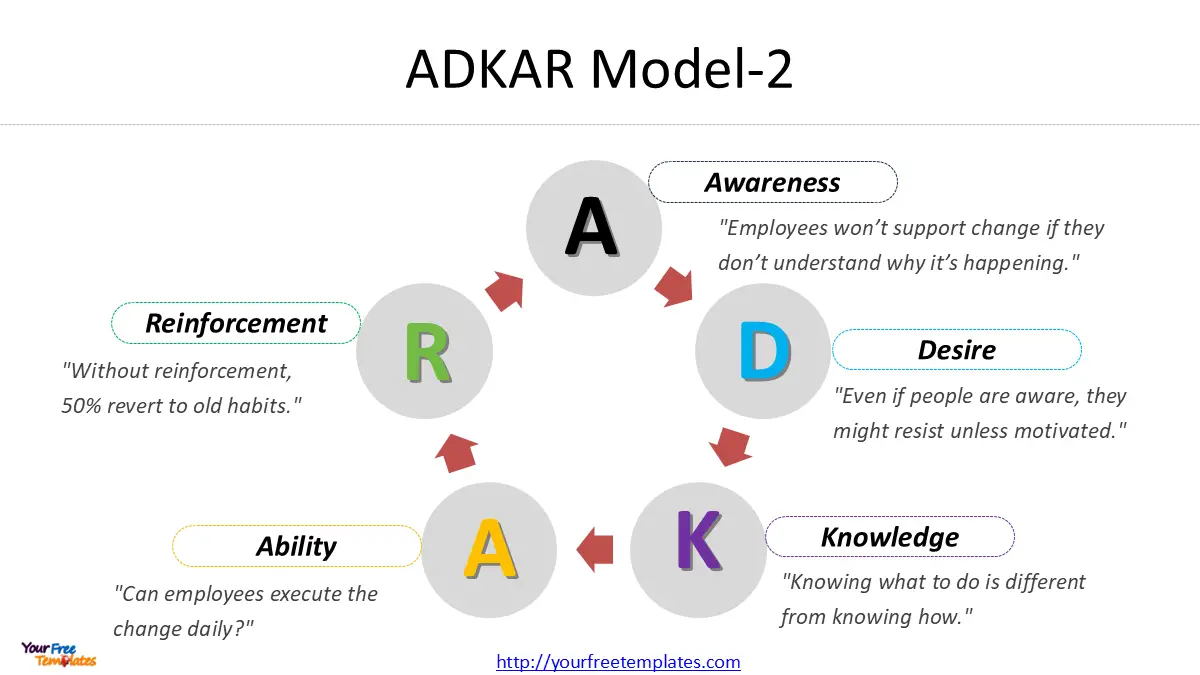Introduction: Why ADKAR Beats the 70% Failure Rate
Imagine this: Your company invests $2M in a new CRM system, but 6 months later, 60% of employees still use old spreadsheets. Sound familiar? You’re not alone—70% of organizational changes fail due to poor employee adoption (McKinsey).
The ADKAR Model, developed by Prosci founder Jeff Hiatt, flips the script. Unlike top-down approaches, ADKAR targets the human roadblocks that derail change. Used by firms like Microsoft and Siemens, it’s a goal-oriented framework that walks individuals through 5 stages:
-
Awareness of the need to change
-
Desire to participate
-
Knowledge of how to change
-
Ability to implement new skills
-
Reinforcement to sustain change
In this guide, you’ll get:
✔ Actionable steps for each ADKAR stage
✔ A real-world case study (89% adoption in 6 months)
✔ Common pitfalls and how to avoid them
At the end of this post, you can download our ADKAR Model PowerPoint template to fit your purpose. As the same diagram PowerPoint template series, you can also find our rms market share, Energy-as-a-Service, the impact of climate change on international business strategies, Blockchain in Renewable Energy, SPACE Matrix, Bowman’s Strategy Clock, Value Chain Analysis, Climate Change, Carbon Neutral Meaning, Renewable Energy Sources, Generative AI, Circular Economy, Blue Sea Strategy, 2025 Calendar with Holidays, The 7 Habits of Highly Effective People, Six Thinking Hats, Pareto Chart, Occam’s Razor, Data Mining, marketing segment, Porter’s five forces, SWOT Analysis, GE Matrix, BCG Matrix, Artificial Intelligence, National Diamond and BlockChain PowerPoint templates.

1. ADKAR Model Explained: The 5 Stages That Drive Change
ADKAR isn’t about checklists or timelines—it’s a people-first blueprint. Let’s break it down:
Prosci ADKAR Stage 1: Awareness – “Why Change?”
Problem: Employees ignore changes they don’t understand.
Solution: Communicate the burning platform.
Example:
When a UK bank introduced AI-powered fraud detection, they:
-
Shared data: *“Fraud costs us £3M/year—this tool cuts it by 80%.”*
-
Ran town halls with cybersecurity experts.
Pro Tip: Use storytelling. Instead of “We need new software,” say: “Last quarter, a phishing scam cost Sarah in Accounting her job. This change protects everyone.”
ADKAR Model Stage 2: Desire – “What’s In It For Me?”
Problem: Awareness ≠ motivation.
How to Build Desire:
-
Address WIIFM (What’s In It For Me):
-
“This new system cuts your report time by 50%.”
-
-
Involve influencers: Recruit change champions from each team.
Example:
A German manufacturer automated assembly lines. To counter union resistance, they:
-
Offered upskilling bonuses for operators who trained early.
-
Let workers name the new robots (creating ownership).

Prosci ADKAR Stage 3: Knowledge – “How Do I Change?”
Myth: “We sent a manual—they’re trained.”
Reality: Knowledge requires hands-on learning:
-
Microlearning videos (<5 mins)
-
Simulations (e.g., VR for factory safety changes)
-
“Lunch & Learn” sessions
Case Study:
At a French pharmaceutical company, scientists resisted a new lab system. The fix?
-
Peer coaching: Early adopters mentored colleagues.
-
Gamification: Leaderboards tracked who logged the most trials.














